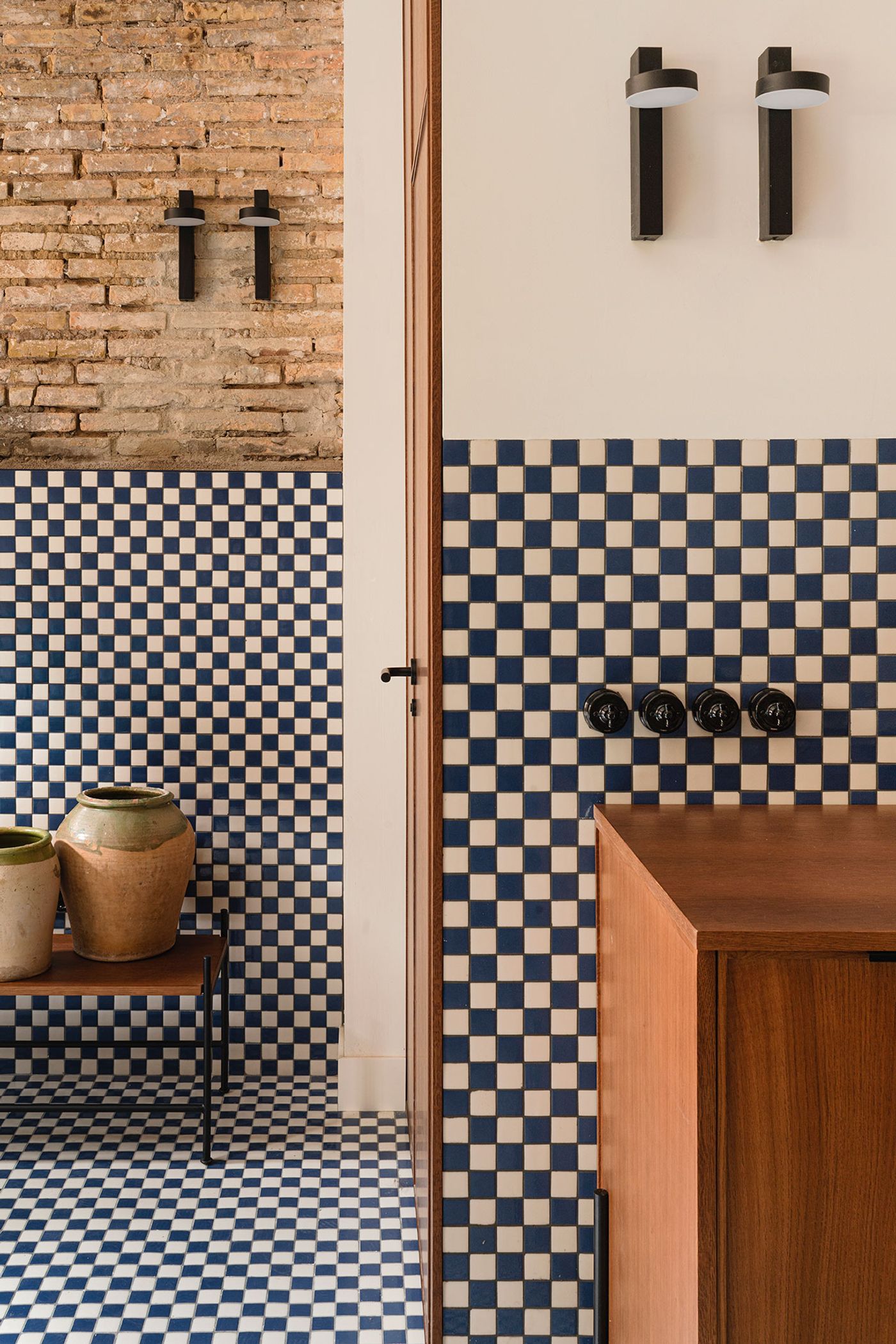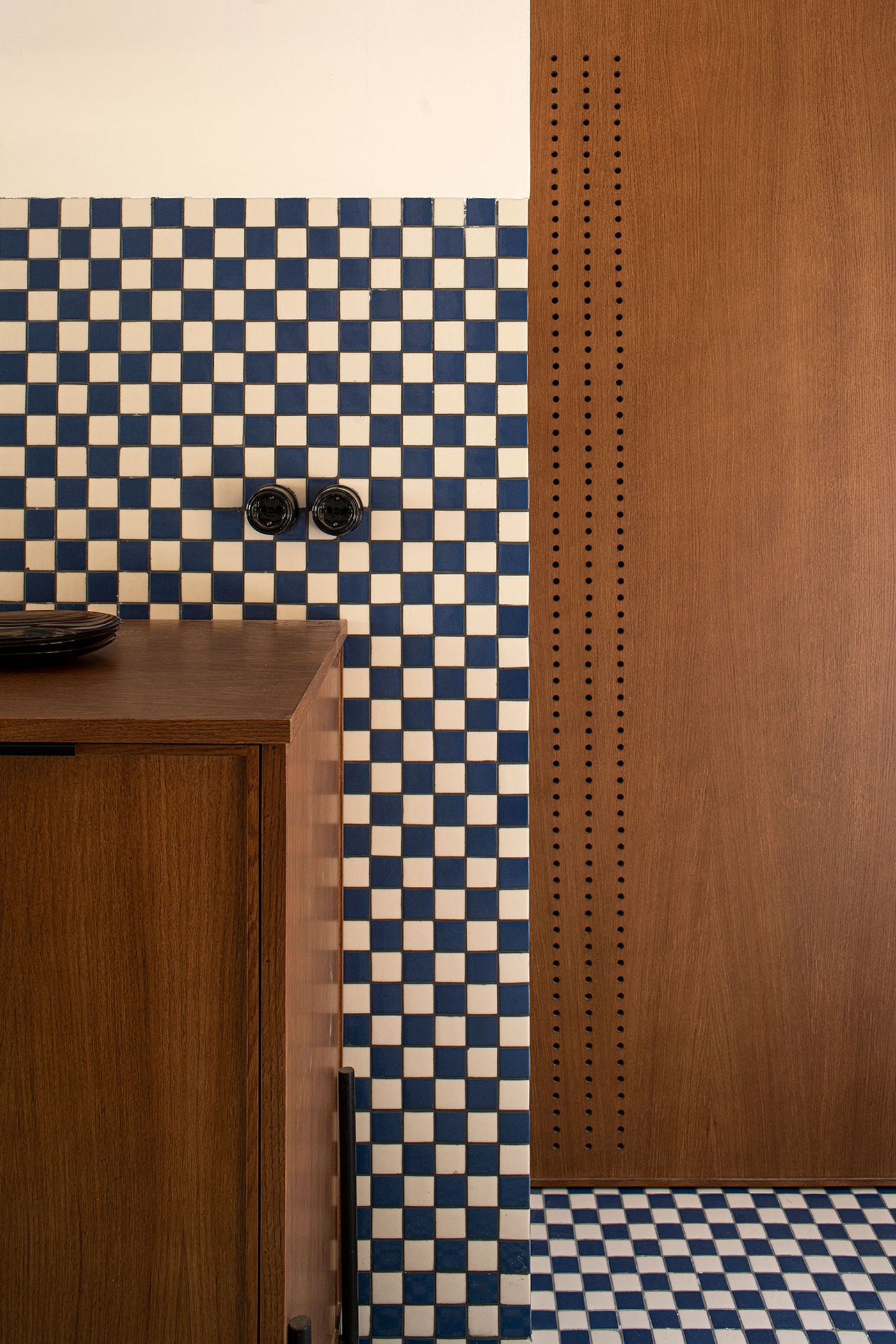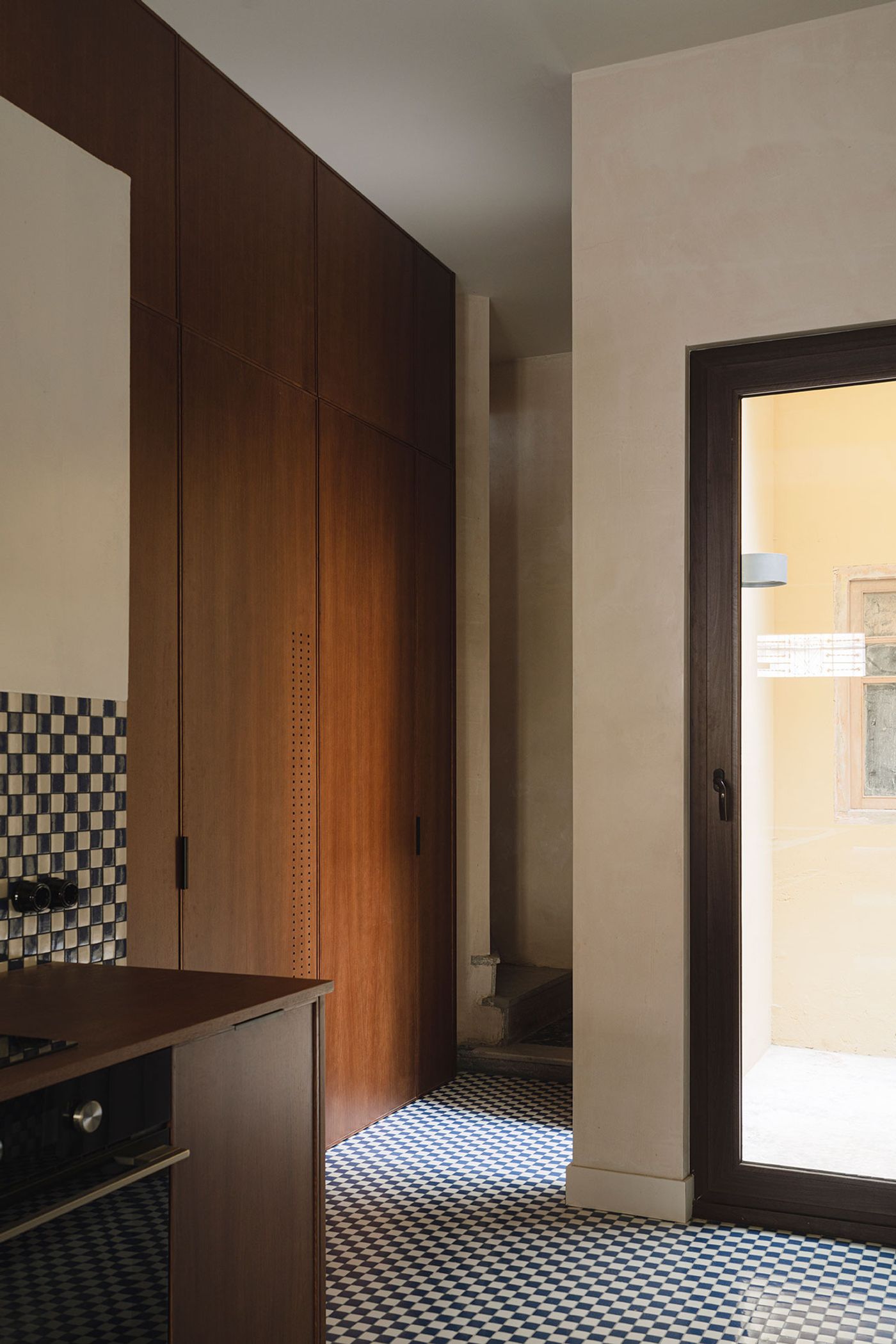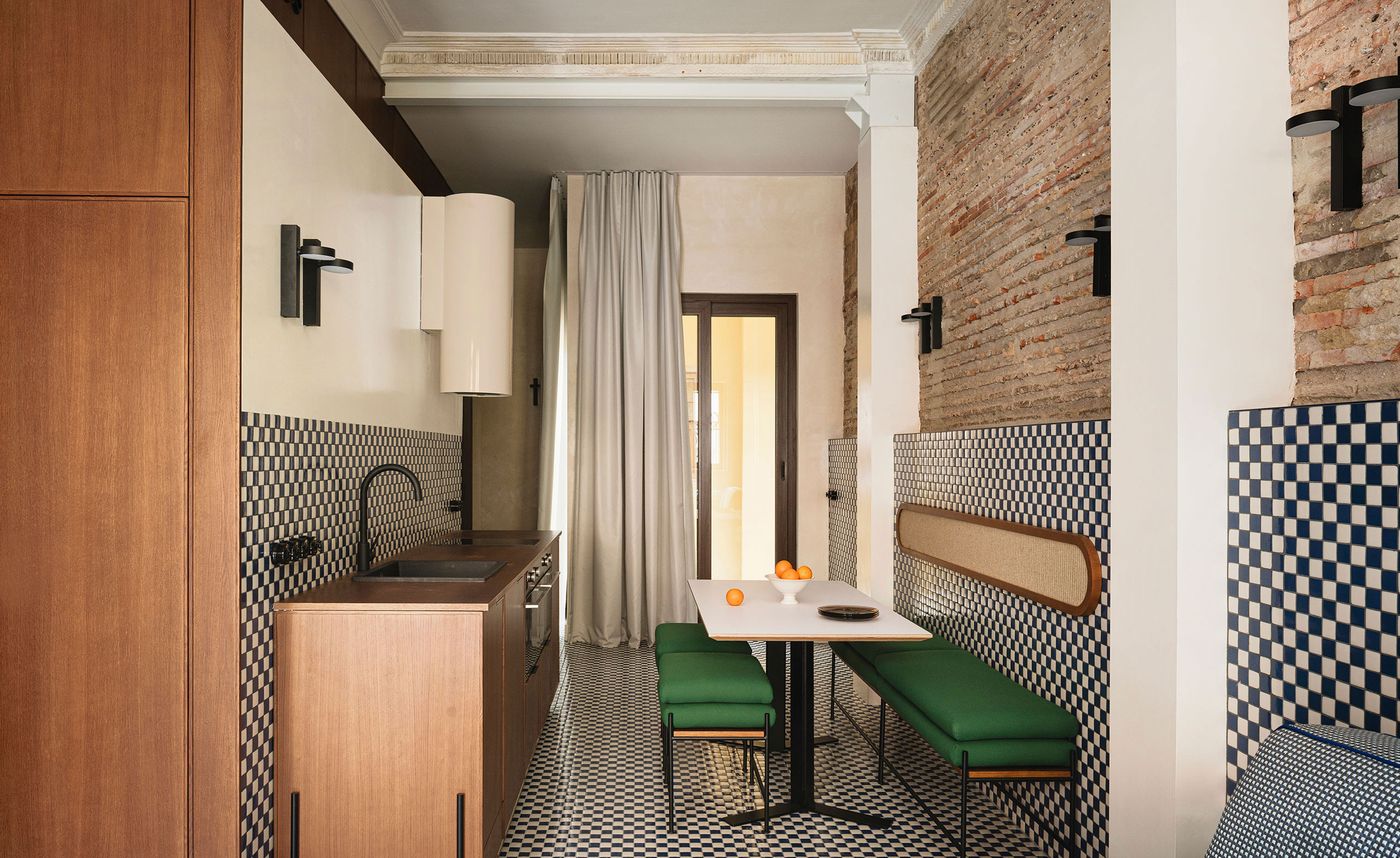
A Renovated Fisherman's House in Valencia Boldly Straddles Past and Present
Words by Yatzer
Location
Valencia, Spain
A Renovated Fisherman's House in Valencia Boldly Straddles Past and Present
Words by Yatzer
Valencia, Spain
Valencia, Spain
Location
Commissioned to renovate a compact townhouse in Valencia’s old fishermen's quarter, El Cabanyal, architects María Daroz and David Puerta from the local practice Viruta Lab boldly animated the property’s architectural heritage with a contemporary design language inspired by the neighbourhood’s vibrantly ornamented facades. Original brickwork and plasterwork, playfully juxtaposed with white and blue tiling in a checkerboard pattern and minimalist timber joinery, create a modern living environment that nevertheless conveys the building’s storied history and evokes its sentimental value, as it was formerly the residence of the owner’s grandparents.
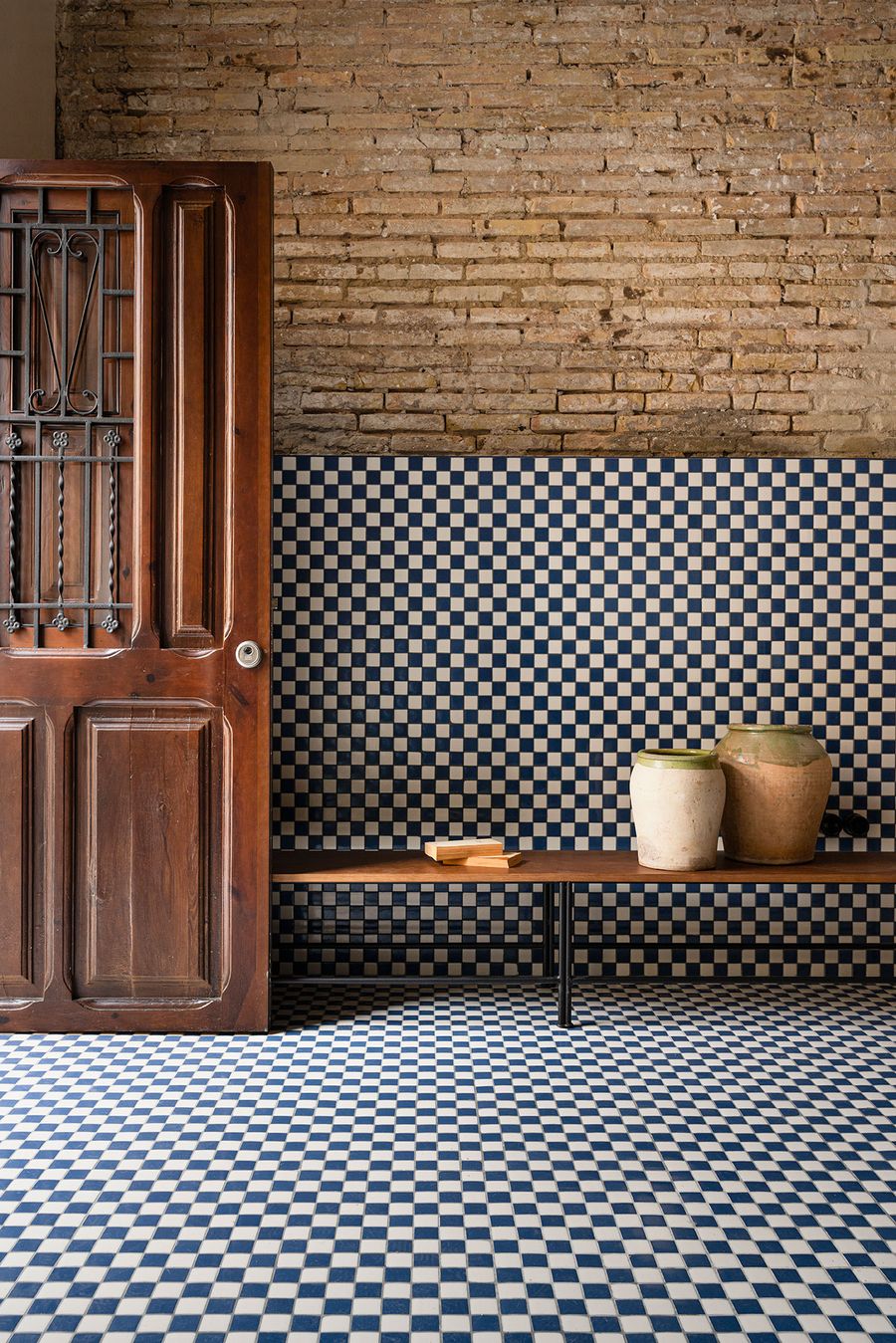
Photography by David Zarzoso.

Photography by David Zarzoso.
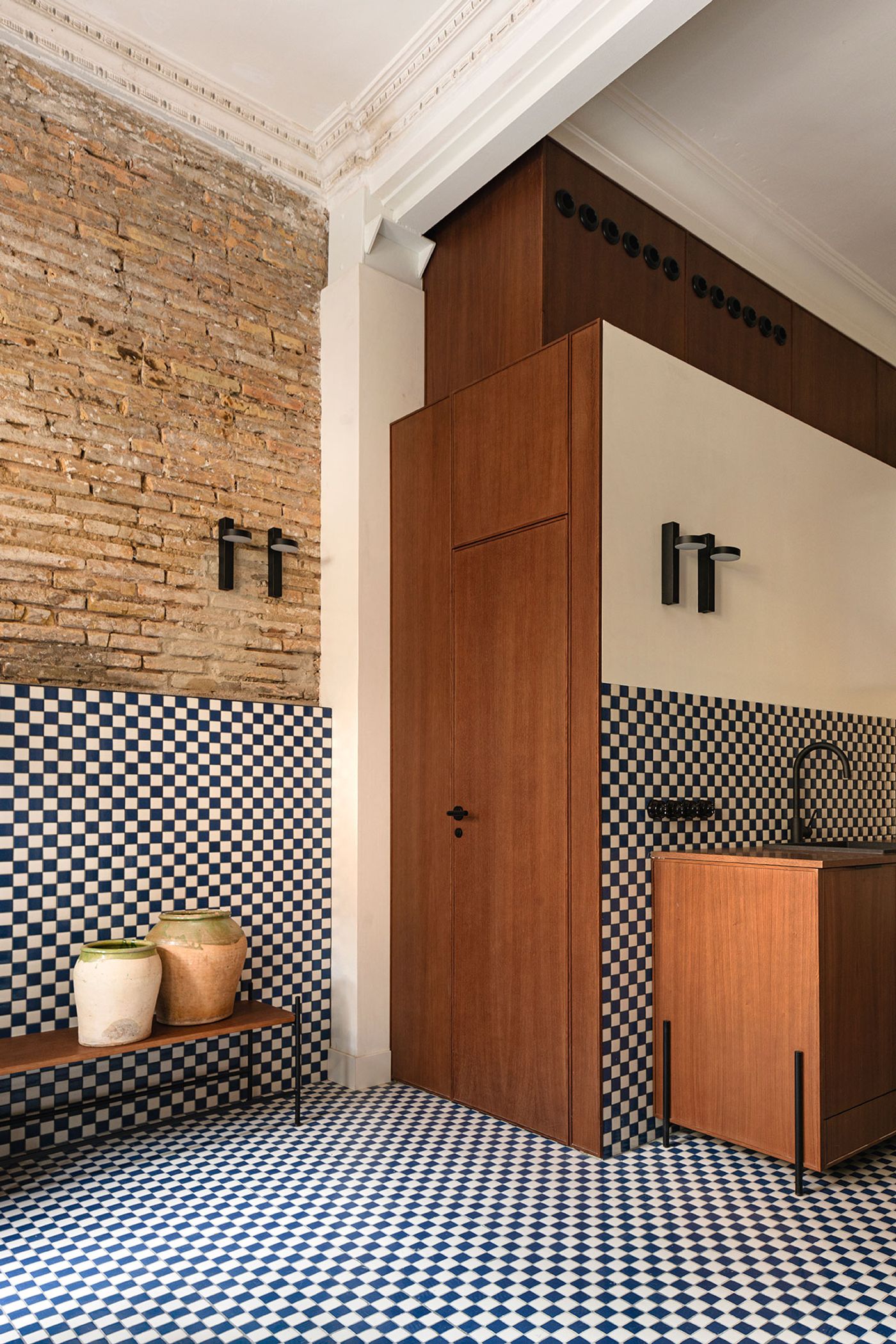
Photography by David Zarzoso.

Photography by David Zarzoso.
Built in 1946, the two-storey house had been left abandoned for numerous years, to the detriment of its building fabric. Stripped down to its core, the property’s original masonry walls have been partly left exposed, while its decorative mouldings have been meticulously refurbished, a testament to the team’s background in architectural heritage conservation. The weathered brickwork is contrasted with the white and blue checkerboard tiling, which the team also applied across the floors and part of the walls. Moderately modern in sensibility, the graphic tile design is a nod to the neighbourhood’s centuries-old local tradition of covering building facades with brightly coloured tiles, usually in maritime shades like blue, green and white, often featuring zigzag or checkerboard patterns. Timber furnishings, which include salvaged carpentry such as doors that have been stripped and waxed, along with new elements rendered in the same finish, serve to bring everything harmoniously together.

Photography by David Zarzoso.

Photography by David Zarzoso.

Photography by David Zarzoso.
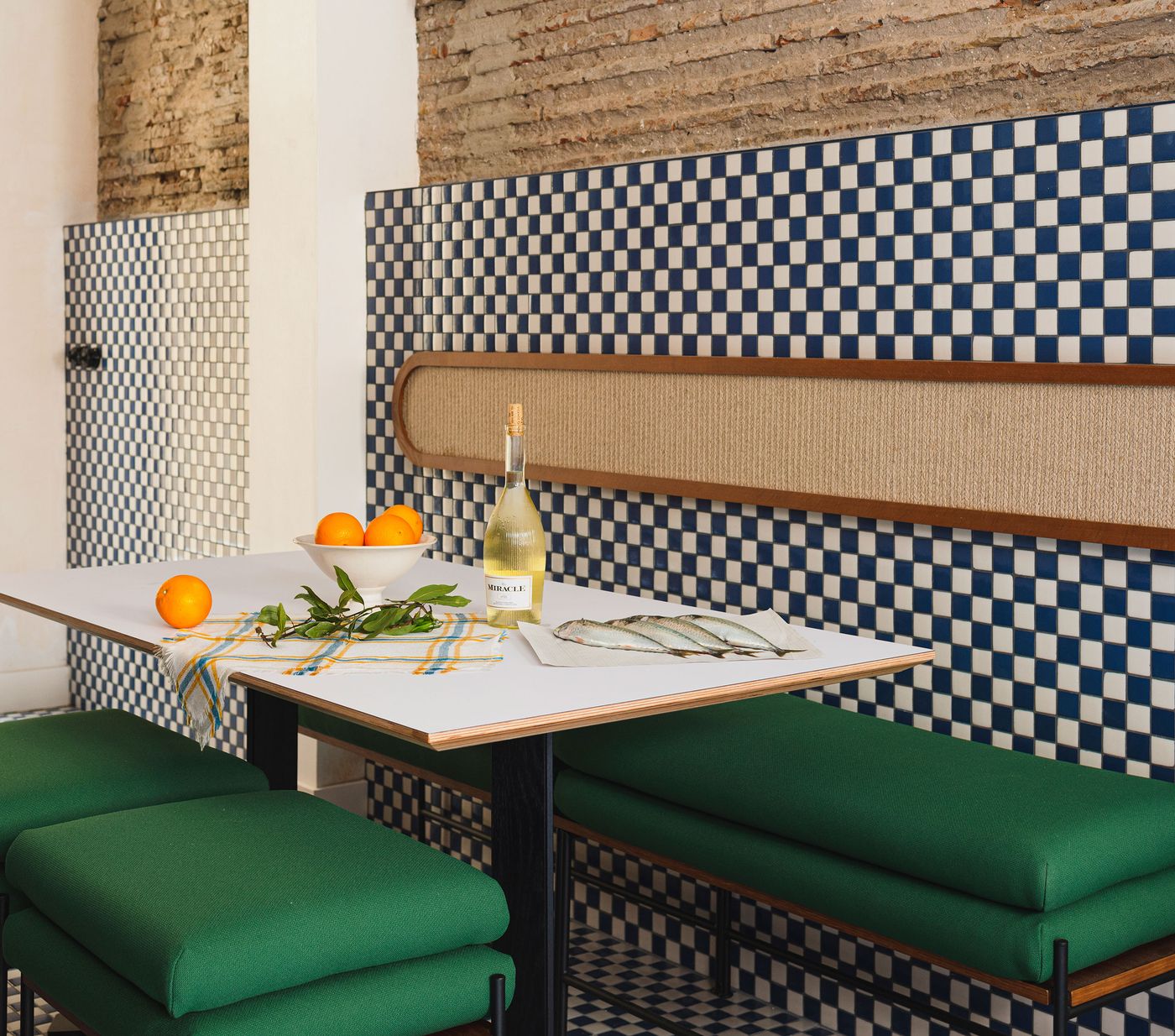
Photography by David Zarzoso.
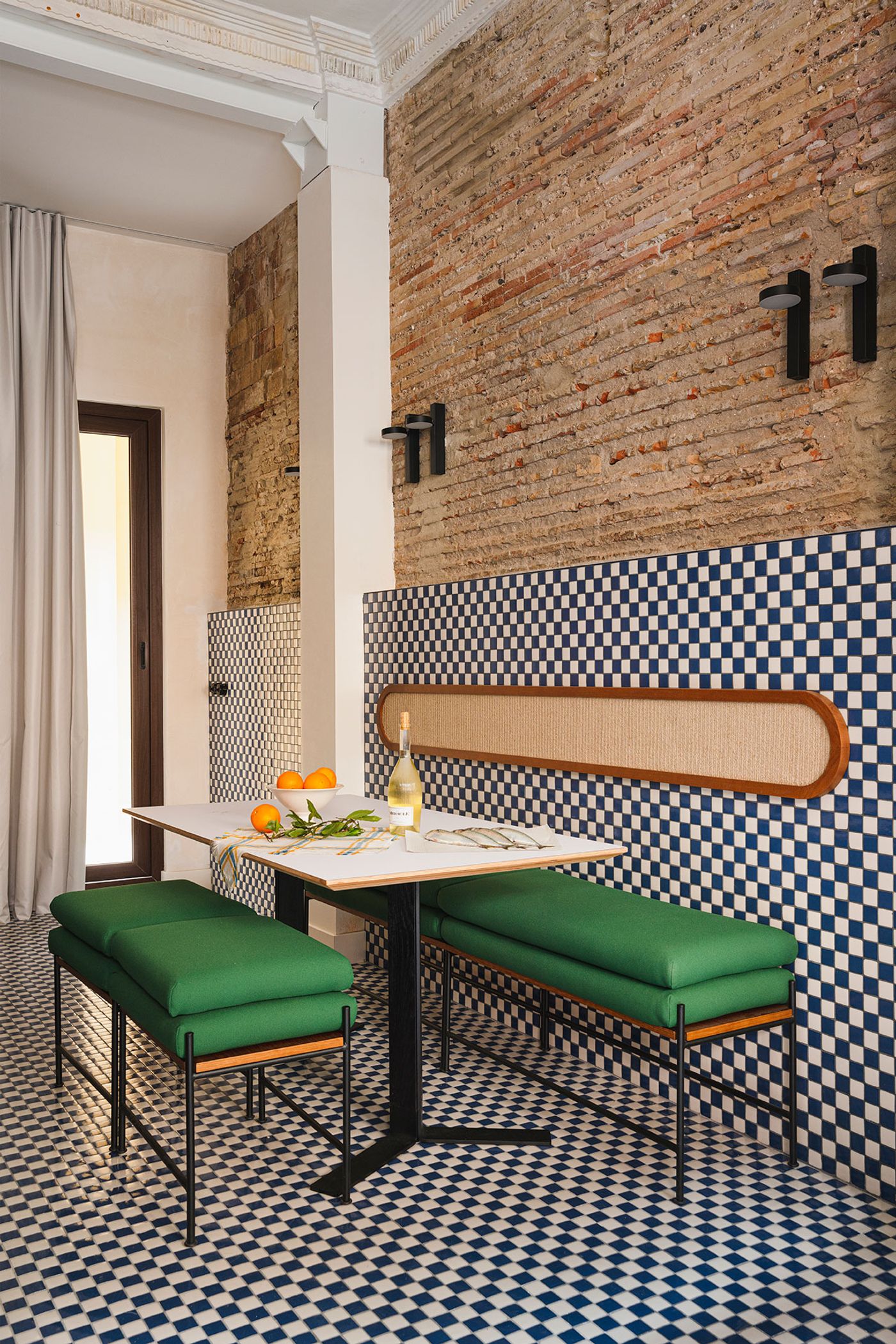
Photography by David Zarzoso.
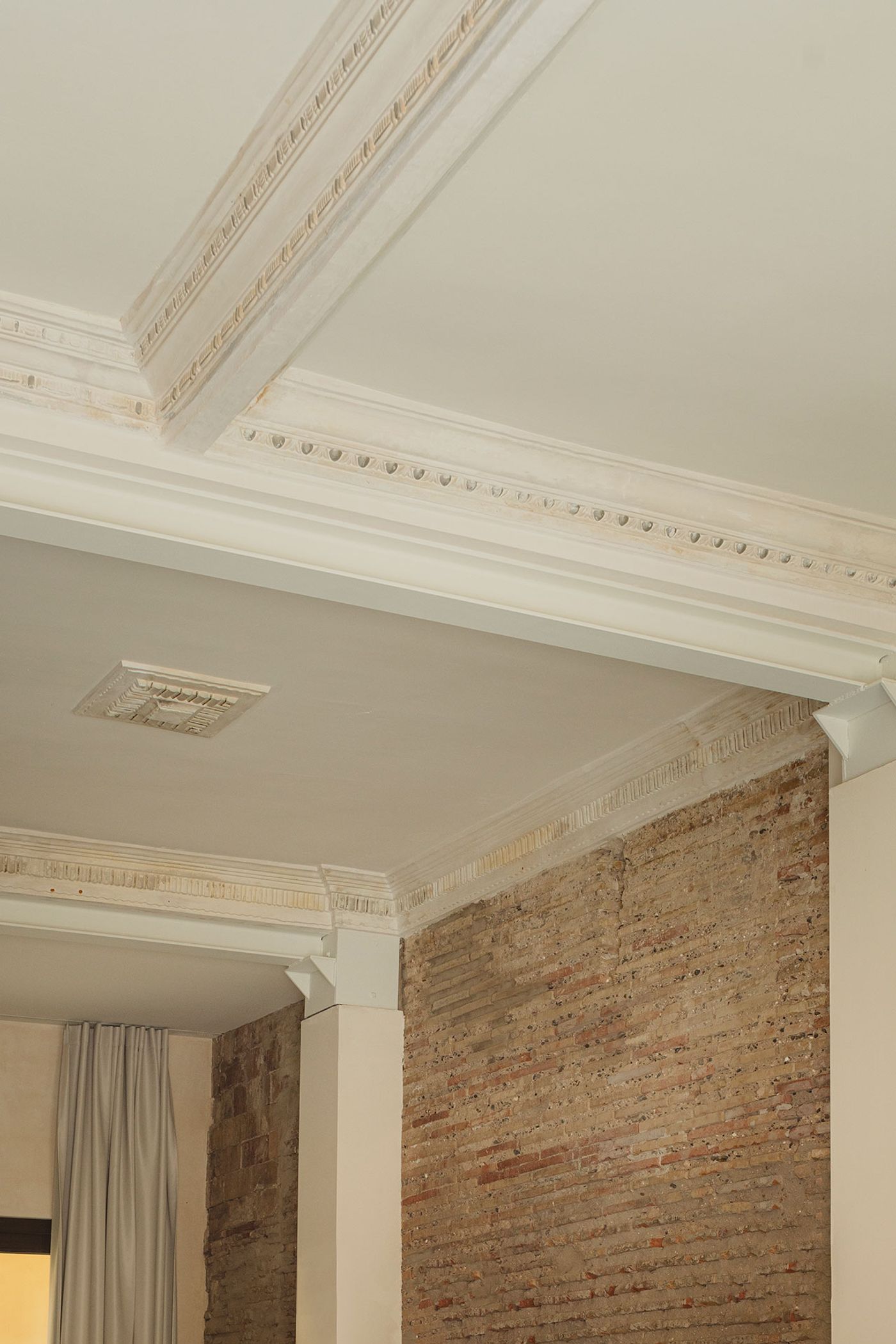
Photography by David Zarzoso.
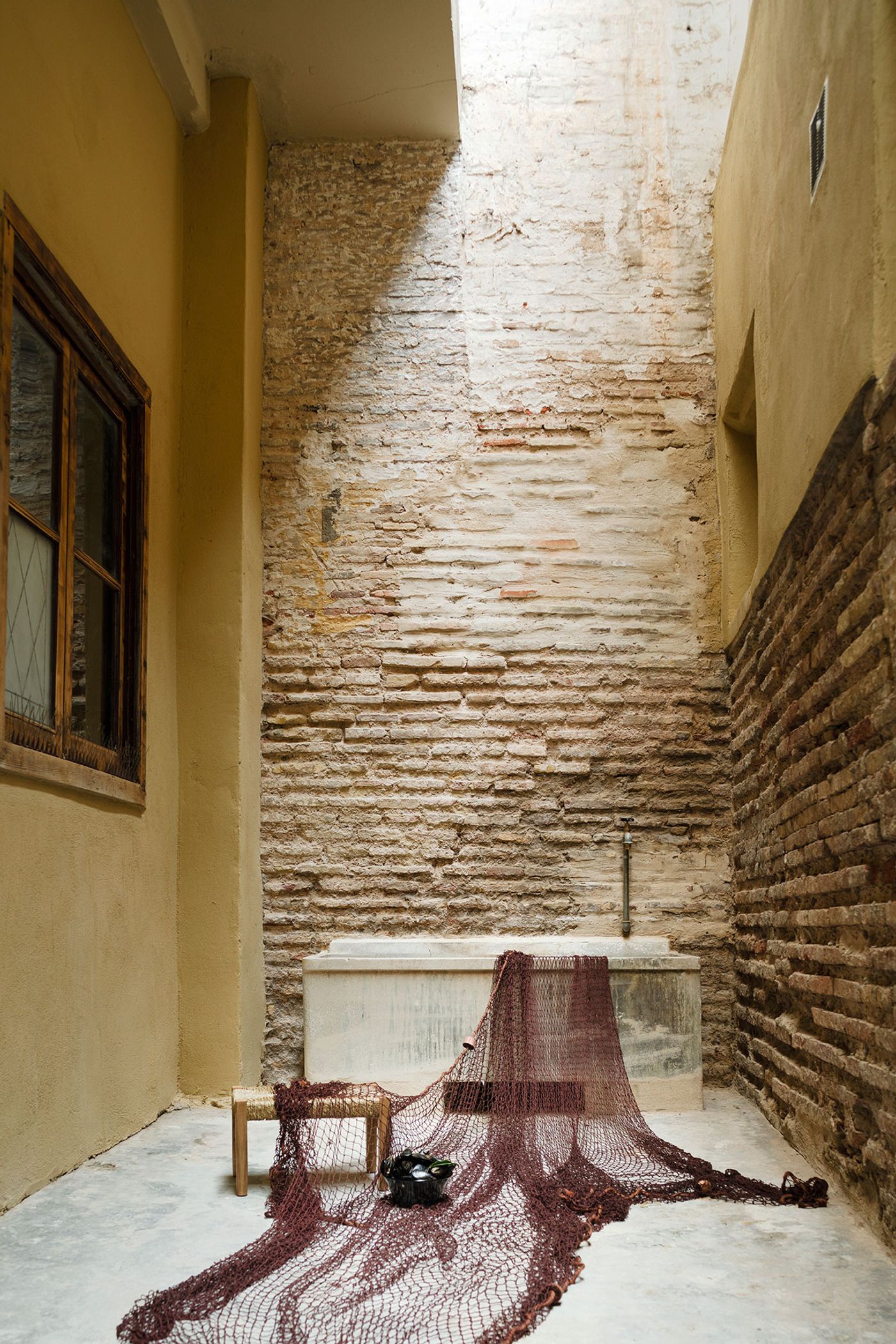
Photography by David Zarzoso.
On the ground floor, an open-plan layout connects a living area at the front of the house to a small courtyard at the back via the kitchen/dining area complete with a timber structure housing a compact bathroom subtly incorporated into the kitchen area. This configuration imbues a sense of spaciousness while enabling cross-ventilation and increasing natural light entering the house. A similar timber structure housing the bathroom can also be found on the upper level, nestled between the two bedrooms. Featuring a custom-designed, free-floating vanity unit, the bathroom is accessed via repurposed glass and wood doors, which now function as sliding panels. Connecting the two floors, as well as a small rooftop where the team has installed a wooden gazebo, the building’s original staircase encapsulates the building’s redesign, with the old granite steps intermingling with salvaged black terrazzo tiles and the new white and blue checkerboard tiling.

Photography by David Zarzoso.
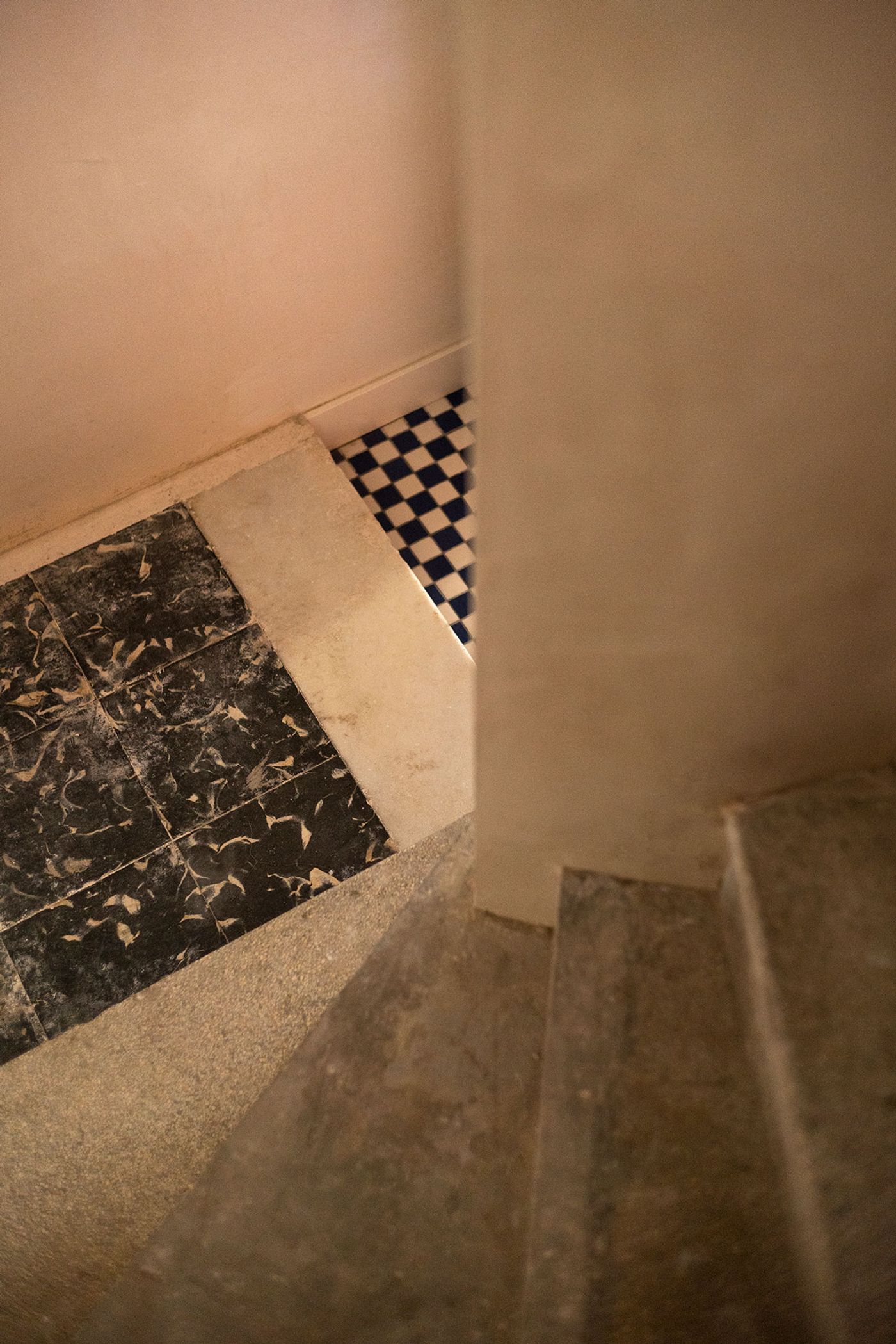
Photography by David Zarzoso.
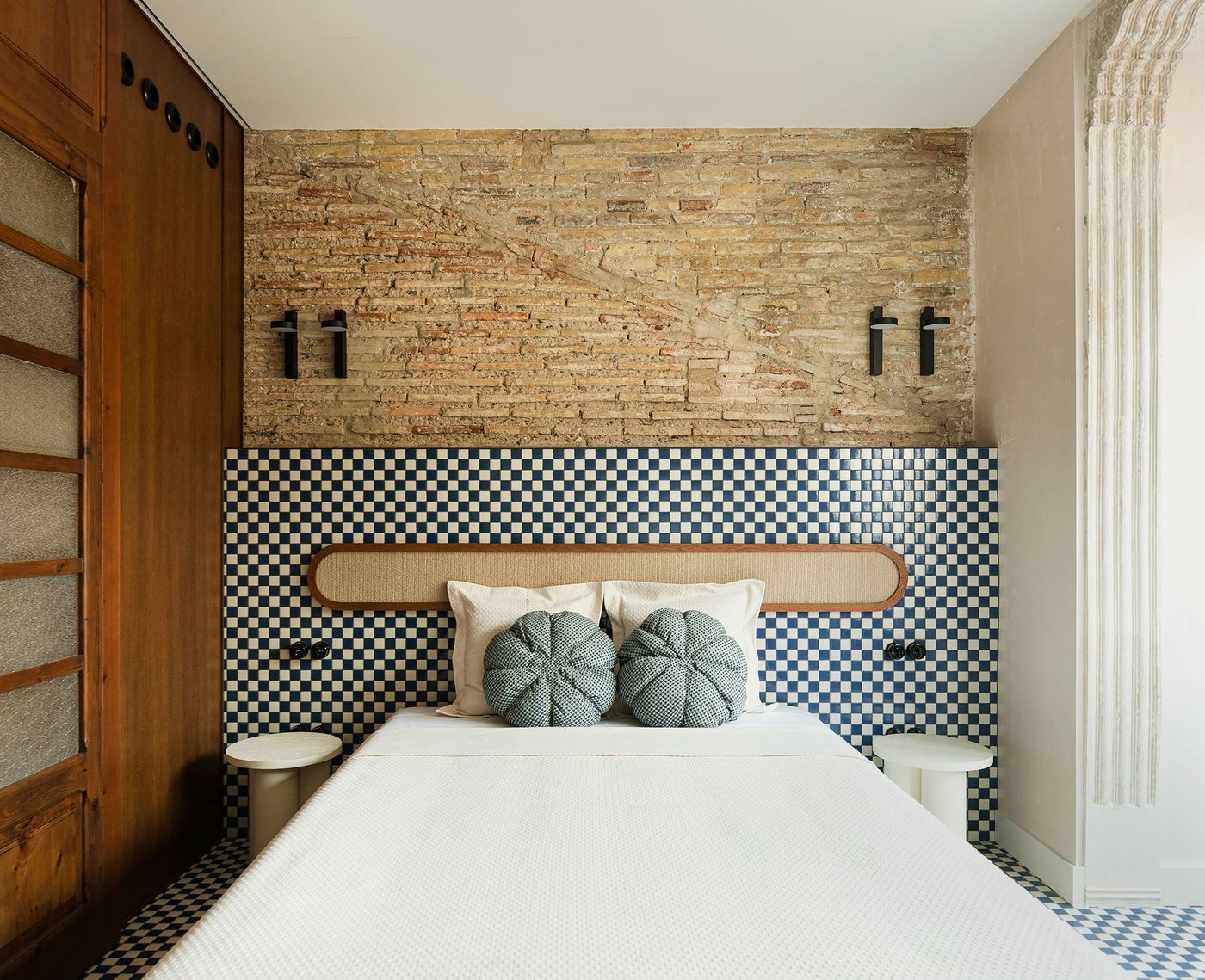
Photography by David Zarzoso.

Photography by David Zarzoso.

Photography by David Zarzoso.

Photography by David Zarzoso.
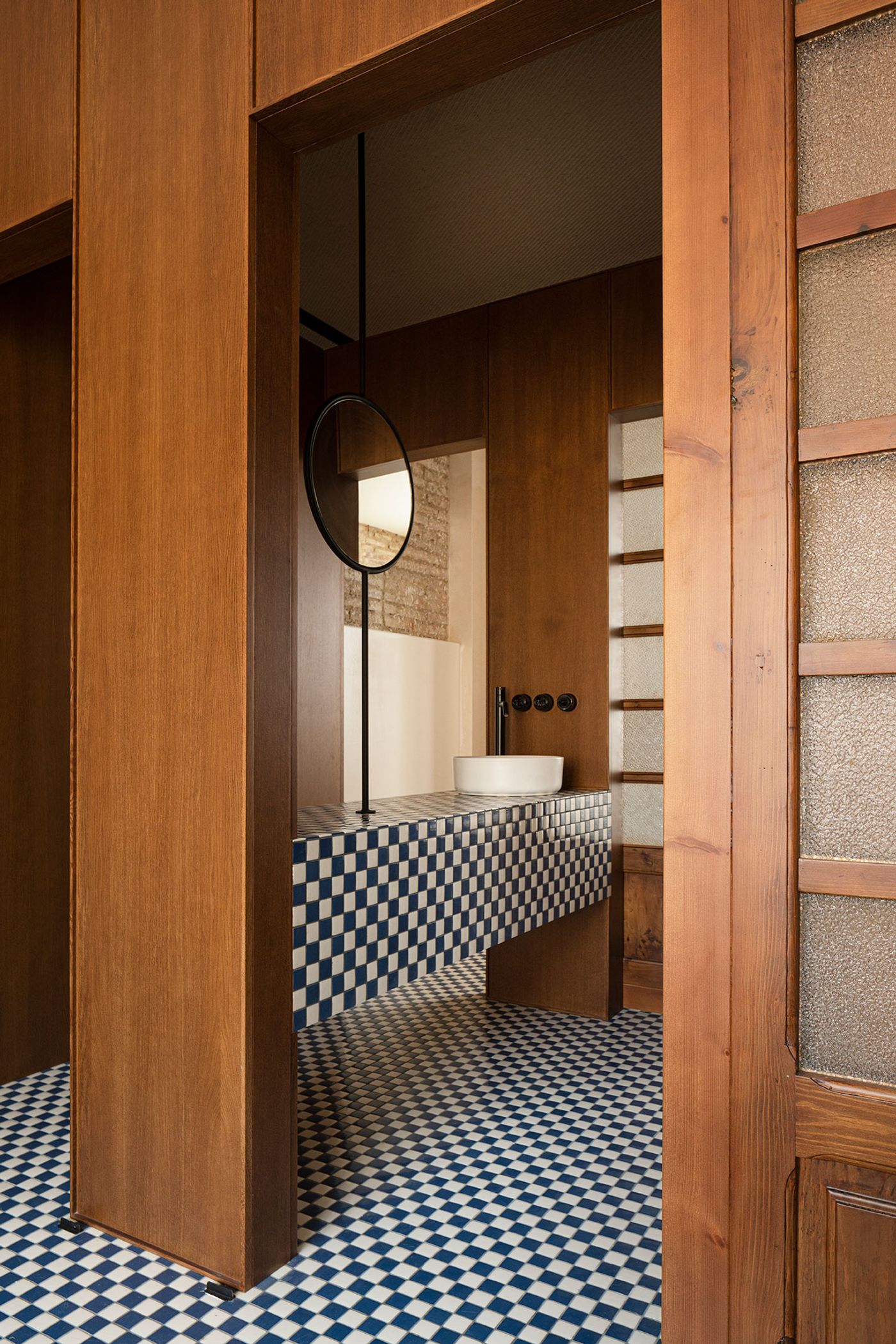
Photography by David Zarzoso.
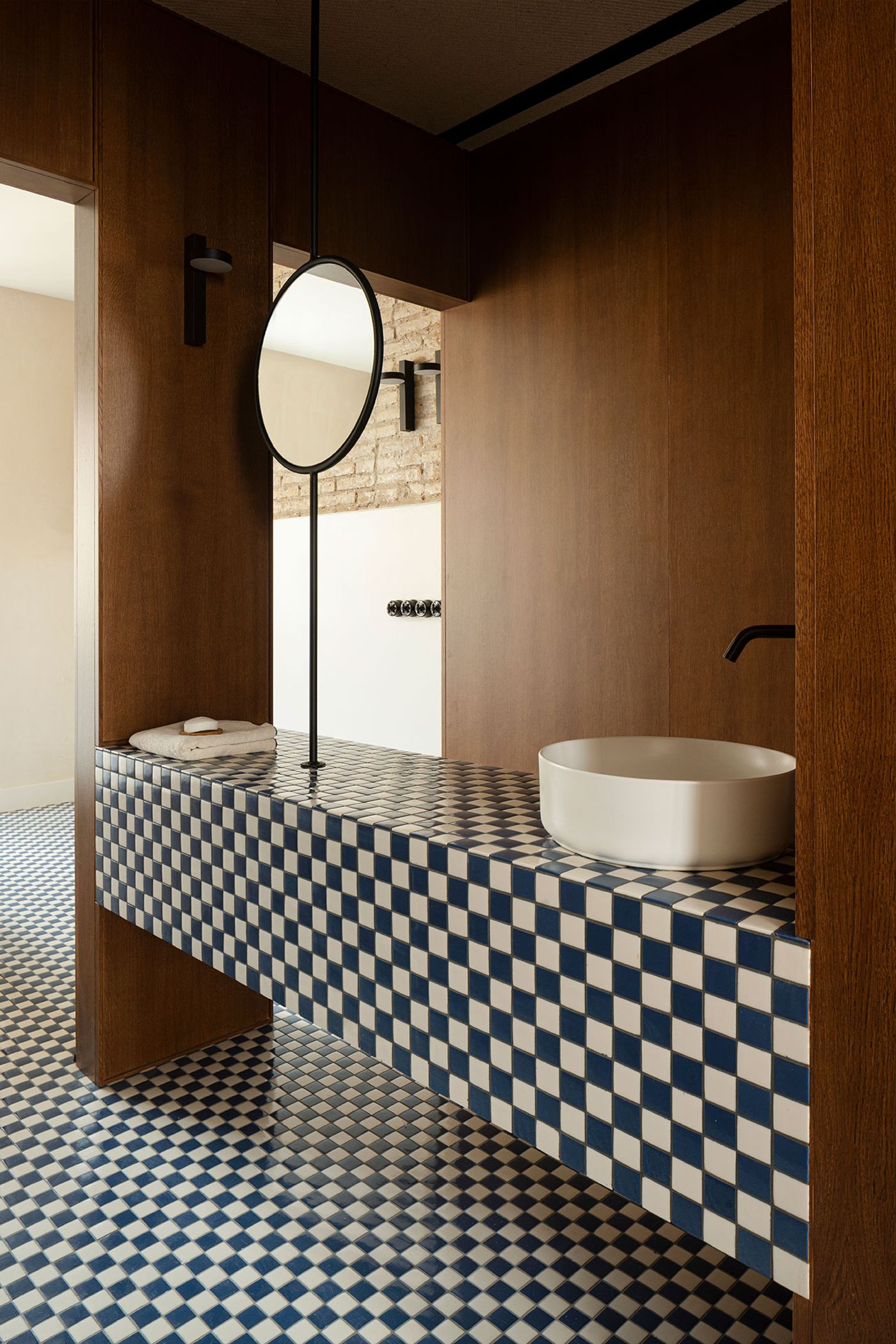
Photography by David Zarzoso.
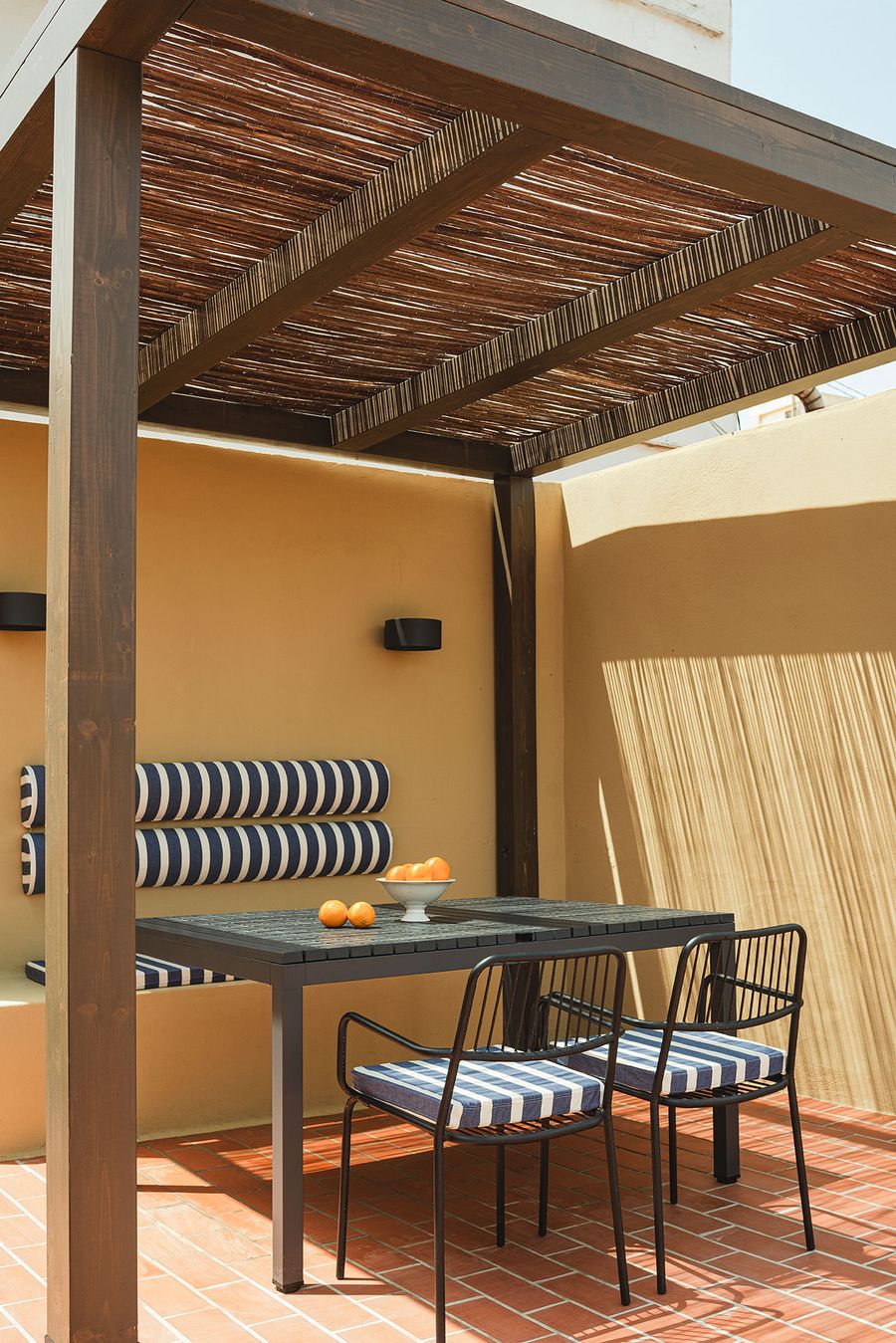
Photography by David Zarzoso.
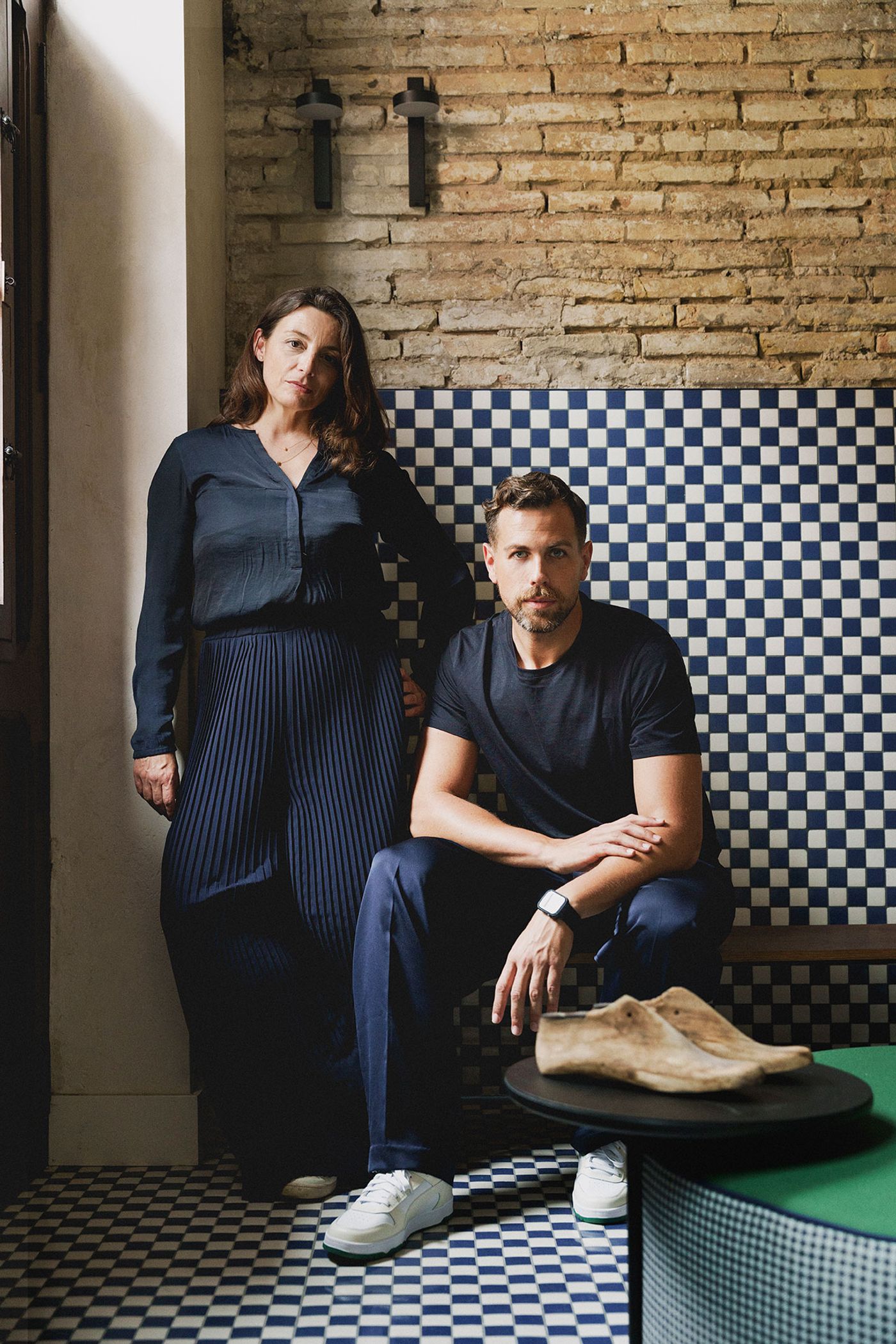
Maria Daroz & David Puerta, co-founders of Viruta Lab.Photography by David Zarzoso.
